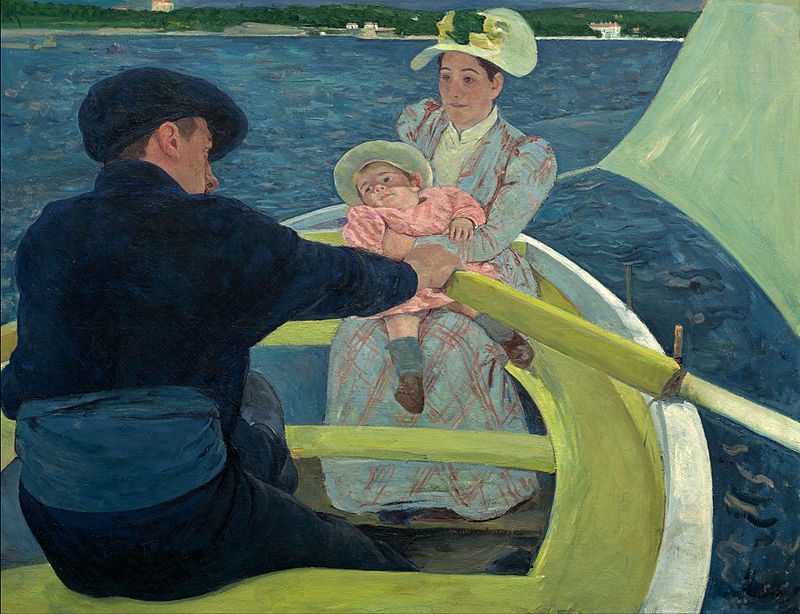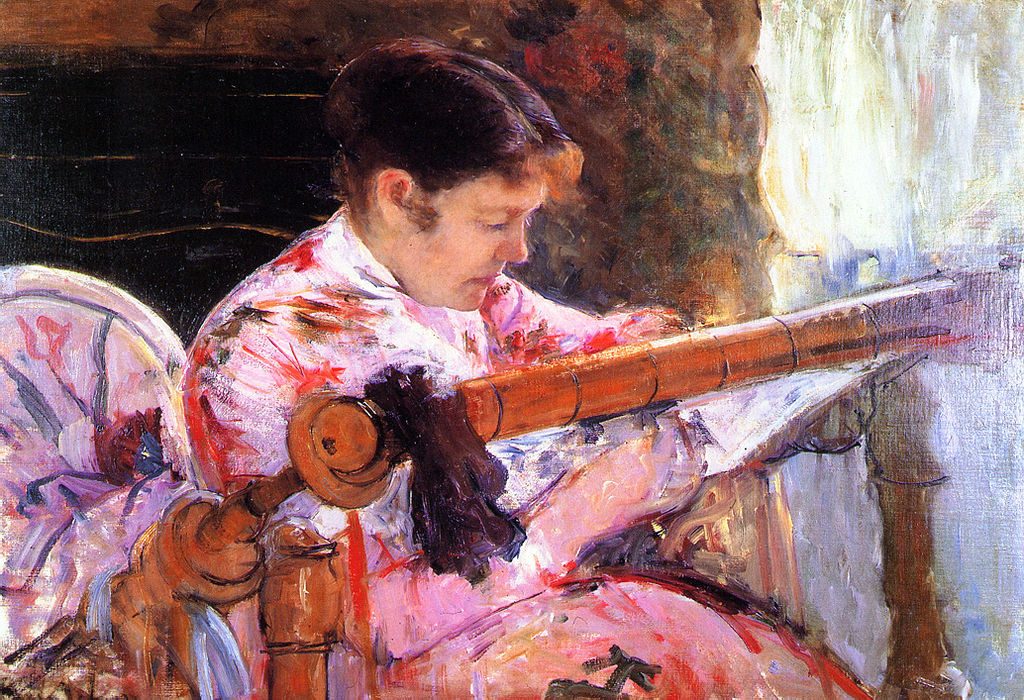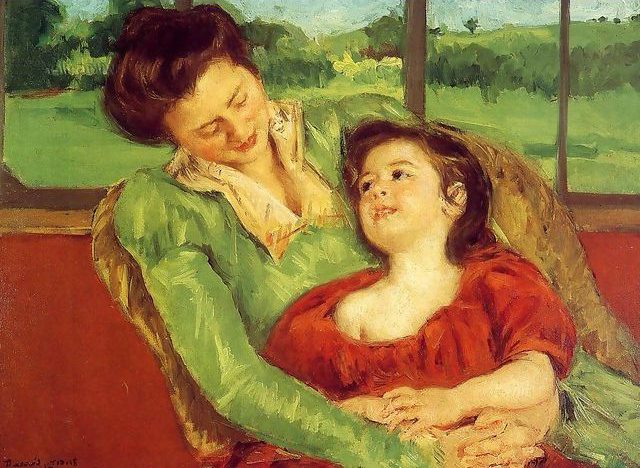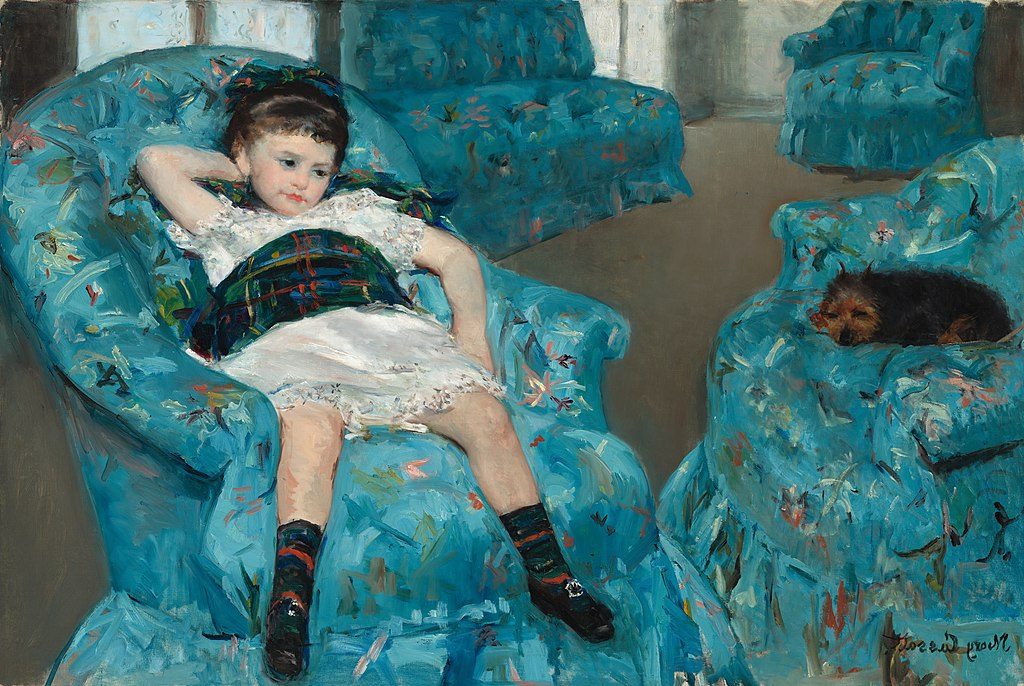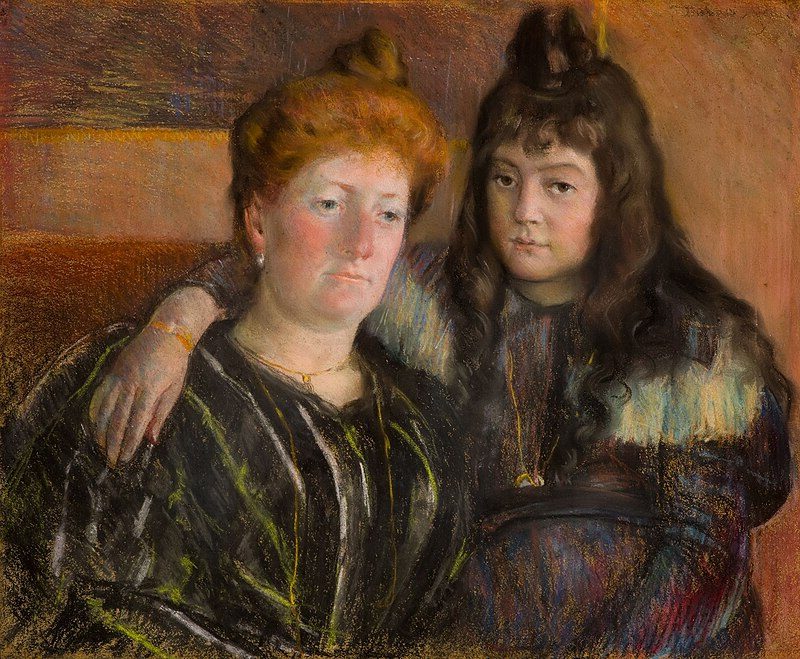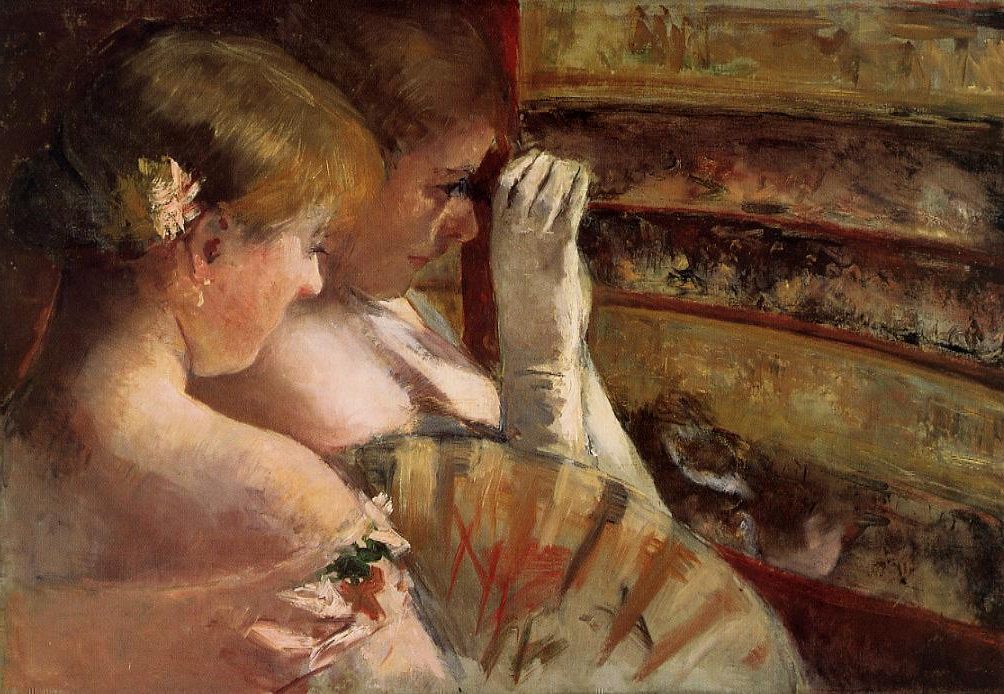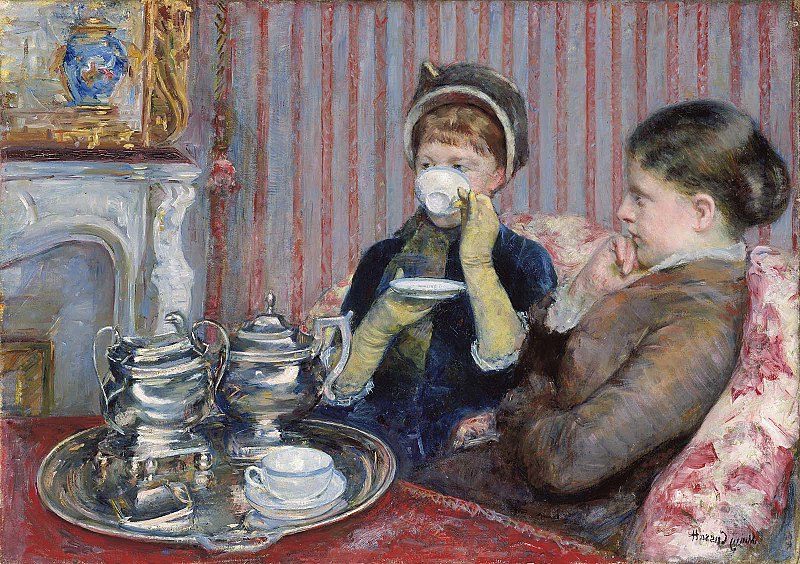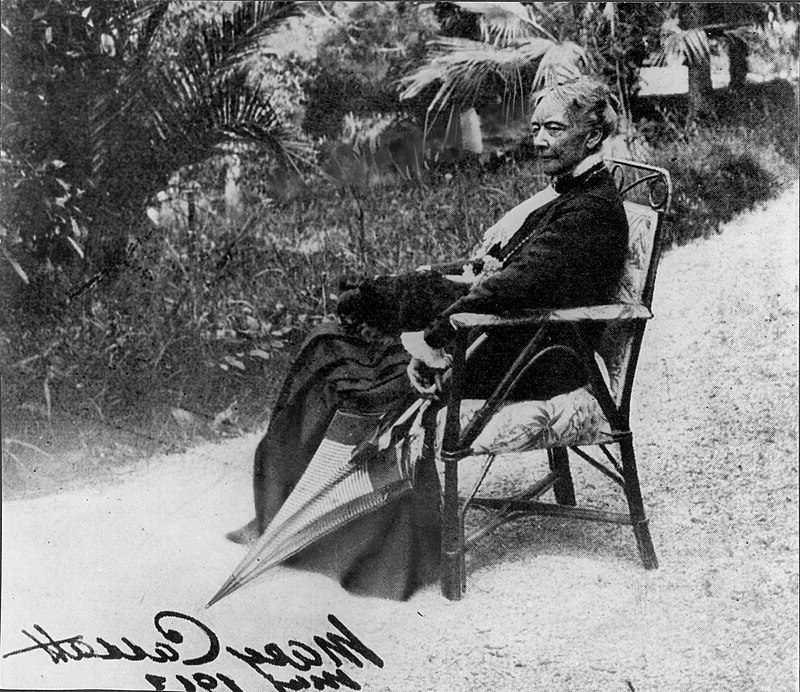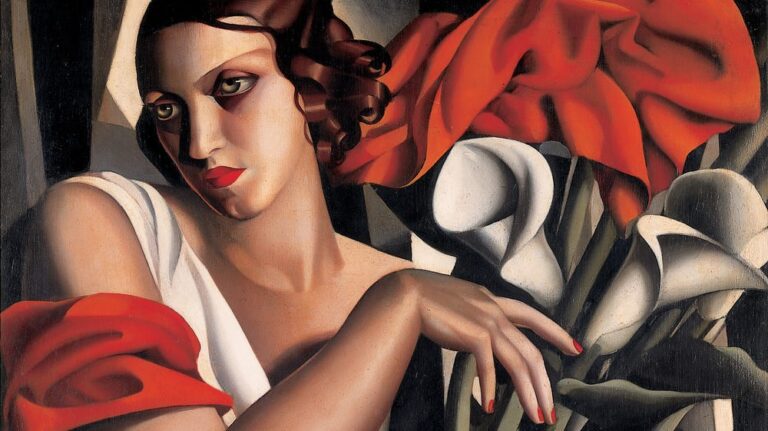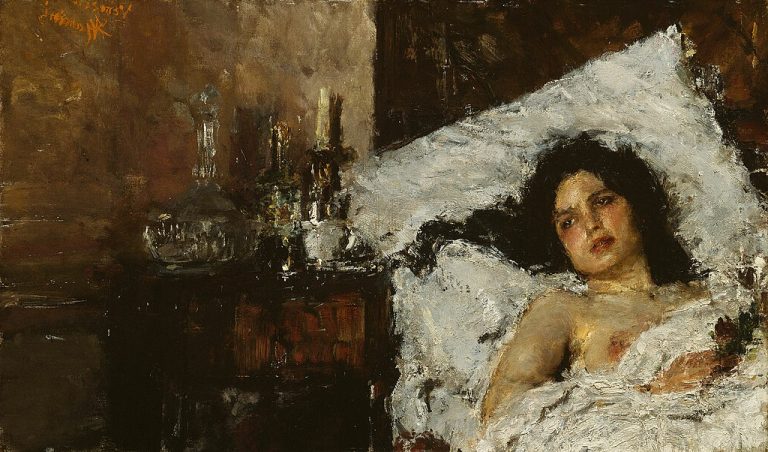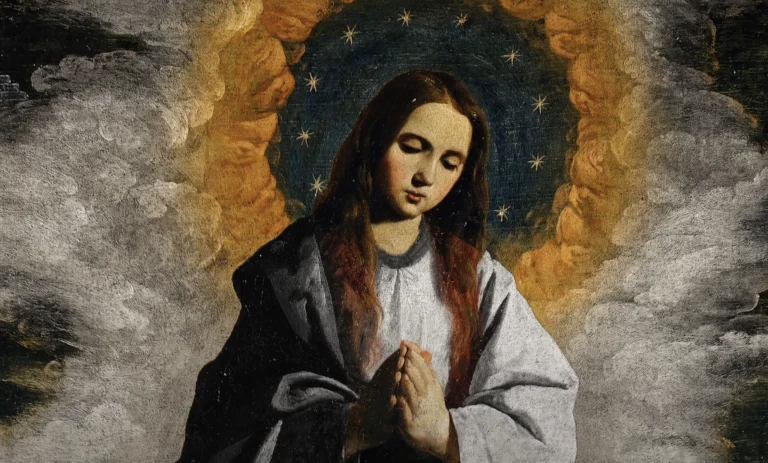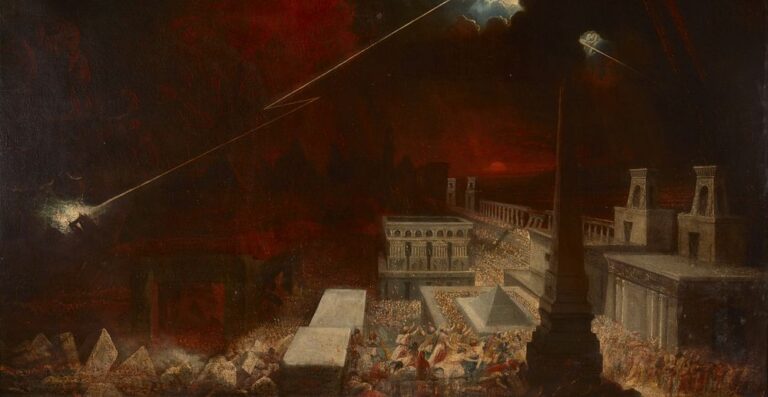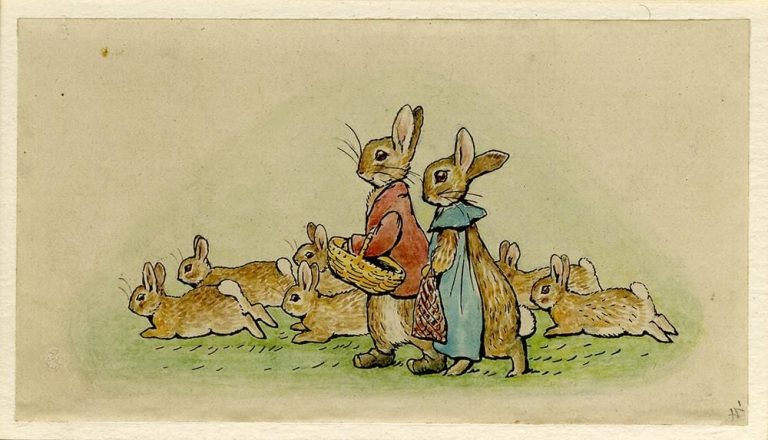Early Life and Education
Mary Cassatt’s journey as an artist began with her upbringing in a wealthy family who initially opposed her artistic ambitions. Her determination and talent would eventually lead her from Pennsylvania to international recognition as one of the most important American Impressionist painters.
Birth and Family Background
Mary Stevenson Cassatt was born on May 22, 1844, in Allegheny City, Pennsylvania (now part of Pittsburgh). She came from an upper-middle-class family with her father, Robert Simpson Cassatt, being a successful banker and land speculator. The family name was originally spelled “Cossart” before being changed.
Despite their social status and financial comfort, her family initially objected to her pursuing art as a profession. This resistance was typical of the era when women of her social standing were expected to become wives and mothers rather than professional artists.
Her privileged background did allow her extensive travel opportunities that would later influence her artistic development.
Artistic Training and Influencers
At age 16, Cassatt decided to become a professional artist, showing early determination. Between 1860 and 1864, she studied painting at the Pennsylvania Academy of the Fine Arts in Philadelphia, one of the few institutions accepting female students at that time.
Her early education exposed her to important American artists including Thomas Eakins, though women students faced significant limitations compared to male counterparts. For example, female students couldn’t study from live nude models, considered essential for serious art training.
Frustrated by these restrictions and the slow pace of instruction, Cassatt decided to pursue further education in Europe where she could study the old masters directly.
Initial Exposure to European Art
At age 22, Cassatt made her first trip to Europe, marking the beginning of her international artistic journey. This exposure to European artistic traditions proved transformative for her developing style.
In Paris, she attempted to study at the prestigious École des Beaux-Arts, but the institution did not yet admit women. Undeterred, she arranged private lessons with masters associated with the school and spent hours copying masterpieces in the Louvre.
Her early European experience exposed her to different artistic approaches and techniques unavailable in America. These travels gave her firsthand knowledge of historical masterpieces and contemporary movements that would later influence her distinctive style.
Artistic Career and Development
Mary Cassatt developed a distinctive artistic style over her long career, becoming a key figure in the Impressionist movement. She excelled in portraying intimate domestic scenes, particularly of mothers and children, using innovative techniques influenced by Japanese printmaking and her Impressionist colleagues.
Impressionist Movement Association
Cassatt’s move to Paris in 1874 coincided with the rise of Impressionism. Initially rejected by the traditional Paris Salon, she found her artistic home with the Impressionists. In 1877, Edgar Degas invited her to exhibit with the group, making her one of few American artists in this revolutionary circle.
Her Impressionist style featured bright colors, attention to light effects, and everyday subject matter. Unlike her male counterparts who often painted outdoor scenes, Cassatt focused on domestic settings and social gatherings of women.
The Franco-Prussian War temporarily forced her to return to America, but she soon came back to Paris, fully committing to the Impressionist approach and abandoning conventional academic styles.
Collaboration with Degas
Edgar Degas became Cassatt’s most significant artistic influence and collaborator. Their professional relationship deeply shaped her artistic development throughout the 1870s and 1880s.
Degas introduced Cassatt to pastel techniques and printmaking, skills she quickly mastered. They shared an interest in composition, light effects, and drawing technique.
Unlike their Impressionist colleagues who emphasized outdoor scenes, both artists preferred interior settings and human figures. They often exhibited together and critiqued each other’s work.
Their artistic dialogue led Cassatt to experiment with unusual viewpoints and perspectives in her paintings. While Degas influenced her technical approach, Cassatt maintained her unique focus on women’s lives and domestic scenes.
Key Artworks and Techniques
Cassatt’s most celebrated works combine Impressionist techniques with her distinctive subject matter. “The Boating Party” (1893) demonstrates her mastery of composition and color, featuring bold flattened forms influenced by Japanese prints.
Her mother and child paintings became her signature subject, portraying intimate moments with psychological depth rarely seen in previous artistic traditions. These works show her ability to capture genuine human connection through gesture and expression.
In the 1890s, Cassatt created a series of color prints inspired by Japanese woodblock techniques. These innovative prints used multiple copper plates to achieve complex color effects.
Her technical approach evolved throughout her career, from early oil paintings with loose brushwork to later works with more defined forms. She particularly excelled in pastels, creating luminous surfaces with remarkable texture and depth.
Recognition and Exhibitions
Despite facing gender discrimination in the art world, Cassatt achieved significant recognition during her lifetime. She exhibited regularly with the Impressionists from 1879 to 1886 in their independent shows.
The 1893 World’s Columbian Exposition in Chicago featured her mural “Modern Woman,” which showcased her feminist ideas through allegorical imagery. This major commission brought her American recognition.
By the early 1900s, Cassatt had become an influential figure who advised American collectors like the Havemeyers on purchasing Impressionist works. Her guidance helped bring important European art to American museums, particularly the Metropolitan Museum of Art.
Cassatt’s eyesight began failing in 1912, forcing her to stop painting by 1914. However, her artistic legacy was secured through major exhibitions and growing critical acclaim that recognized her unique contribution to American Impressionism.
Legacy and Influence
Mary Cassatt’s impact extends far beyond her lifetime, reshaping perceptions in the art world and opening doors for future generations of artists. Her distinctive style and subject matter continue to influence contemporary artists and art movements today.
Contributions to American Art
Mary Cassatt served as a crucial bridge between European Impressionism and American art. As an American painter working in Paris, she introduced Impressionist techniques and sensibilities to American collectors and museums. Her connections helped build significant Impressionist collections that now form the cornerstone of major American museums.
The Metropolitan Museum of Art and National Gallery of Art house important Cassatt works like “The Child’s Bath” and “Little Girl in a Blue Armchair.” These paintings exemplify her technical skill and emotional depth.
Cassatt’s influence on American painting shifted the focus toward domestic scenes and intimate moments. Her precise brushwork and innovative compositions elevated everyday subjects to fine art status.
Role as a Female Artist
As one of few professionally successful female painters of her era, Cassatt broke significant barriers in a male-dominated field. She refused marriage to pursue her career, exhibiting remarkable determination despite limited opportunities for women.
Her close friendship with Edgar Degas demonstrated her acceptance among peers based on artistic merit rather than gender. Unlike many women of her time, Cassatt maintained financial independence through her work.
Cassatt’s focus on mothers, children, and domestic scenes gave voice to women’s experiences often overlooked in art. Works like “Young Mother Sewing” and “Child in a Straw Hat” captured moments of connection with remarkable sensitivity.
Her independent spirit and “bohemian behavior” challenged Victorian-era expectations for upper-class women.
Representation in Museums
Cassatt’s works appear in prestigious institutions worldwide, confirming her place in art history. The National Museum of American Art and Smithsonian Institution maintain significant collections of her paintings and prints.
Her masterpieces consistently draw visitors to major exhibitions. The Metropolitan Museum’s 2018 exhibition “Public Parks, Private Gardens” featured multiple Cassatt works, drawing record attendance.
Cassatt’s Japanese-inspired prints receive particular scholarly attention. Her technical innovations in printmaking continue to influence contemporary printmakers.
Museums increasingly recognize Cassatt not just as an “American Impressionist” but as a groundbreaking artist whose work transcends simple categorization. Her paintings command premium prices at auction, with major works selling for millions of dollars.
Frequently Asked Questions
Mary Cassatt’s life and art raise many fascinating questions about her techniques, subjects, and place in art history. Her groundbreaking work as an American female Impressionist continues to captivate art lovers and scholars alike.
What are some of Mary Cassatt’s most significant contributions to the world of art?
Mary Cassatt broke barriers as the only American officially invited to exhibit with the French Impressionists. This accomplishment was especially remarkable for a woman in the 19th century art world.
She created radical art under the guise of “feminine” subject matter, challenging artistic conventions while depicting scenes considered appropriate for women artists.
Cassatt also introduced Japanese printmaking techniques to Western audiences, blending these influences with her Impressionist style. Her work in color printmaking was innovative and technically sophisticated.
She served as an important bridge between European and American art circles, helping wealthy Americans build impressive Impressionist collections that would later form the core of many museum holdings.
How did Mary Cassatt’s style evolve over the course of her career?
Cassatt began with more formal academic training, working in a traditional style influenced by her European education. Her early works showed skilled draftsmanship but remained within conventional frameworks.
After encountering Impressionist works, particularly those of Degas, she shifted toward looser brushwork, brighter colors, and more intimate compositions. This marked her official entry into the Impressionist movement.
Her middle period saw experimentation with Japanese-inspired compositions, flattened perspectives, and bold patterns. This resulted in some of her most innovative works, including her famous color print series.
Later in life, her eyesight failing, Cassatt’s style became somewhat more simplified and focused on essential forms, though she maintained her interest in depicting tender human relationships.
Can you describe the main themes and subjects present in Mary Cassatt’s body of work?
Mothers and children were Cassatt’s signature subject, depicted with psychological depth and emotional authenticity rather than sentimentality. She captured intimate moments of childcare, play, and connection.
Women engaged in everyday activities formed another significant theme, showing subjects reading, taking tea, attending the opera, or simply reflecting in private moments.
Family relationships beyond motherhood also appeared frequently, portraying sisters, aunts, grandmothers, and female friends in domestic settings.
Although less common in her work, Cassatt occasionally painted portraits of men and scenes that included male subjects. However, her focus remained primarily on the female experience.
What was Mary Cassatt’s relationship with the Impressionist movement?
Cassatt was personally invited by Edgar Degas to join the Impressionists, making her the only American officially part of this revolutionary group. She exhibited with them in four of their eight shows.
Though fully embraced by the movement, she maintained her distinctive style, focusing more on figure studies than landscapes or urban scenes that captivated many of her Impressionist colleagues.
She developed particularly close artistic relationships with Degas and Berthe Morisot, the other prominent female Impressionist. These connections influenced her technical approach and subject choices.
Cassatt helped promote Impressionism in America, advising collectors and encouraging them to purchase works by her colleagues, thus playing a crucial role in the movement’s global acceptance.
How has Mary Cassatt’s work influenced modern artists and painters?
Cassatt’s honest portrayal of women’s domestic life has inspired generations of artists to find profound meaning in everyday experiences. Her work validated domestic subjects as worthy of serious artistic treatment.
Her experimental printmaking techniques influenced the development of graphic arts in the 20th century. Many printmakers have drawn inspiration from her innovative approaches.
Modern feminist artists have looked to Cassatt as a pioneering figure who succeeded in a male-dominated field while maintaining her artistic integrity and personal vision.
Her distinctive color palette and composition style have influenced portrait artists who seek to capture intimate human connections with psychological depth.
What role did Mary Cassatt play in the representation of women and children in fine art?
Cassatt revolutionized the portrayal of motherhood. She depicted it with psychological complexity rather than idealization. Her mothers appear as real individuals with thoughts and identities beyond their maternal role.
She portrayed children as complete human beings with dignity and agency, not just cute or sentimental figures. Her child subjects often display personality, intelligence, and sometimes even defiance.
Cassatt’s work elevated domestic scenes from mere genre paintings to subjects worthy of serious artistic expression. She found universal meaning in private moments between family members.
As a “New Woman” of her era, she created images of modern women engaged in independent activities. This helped to expand visual representations of women’s experiences.
